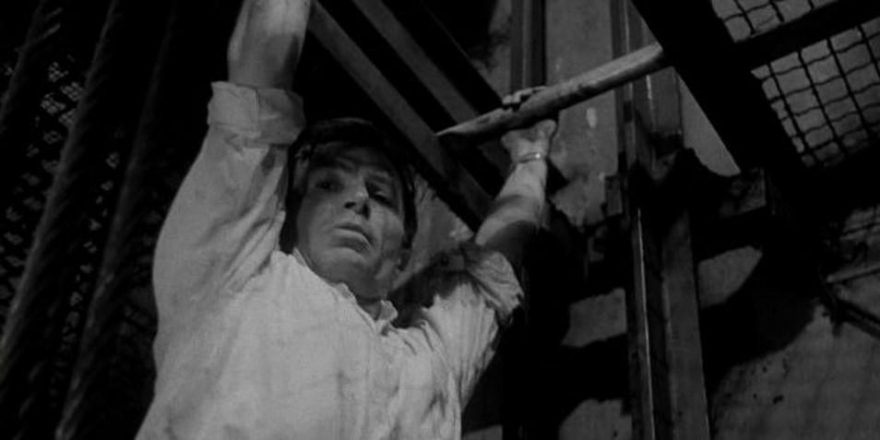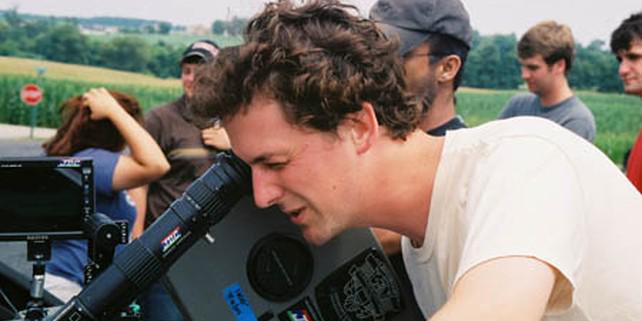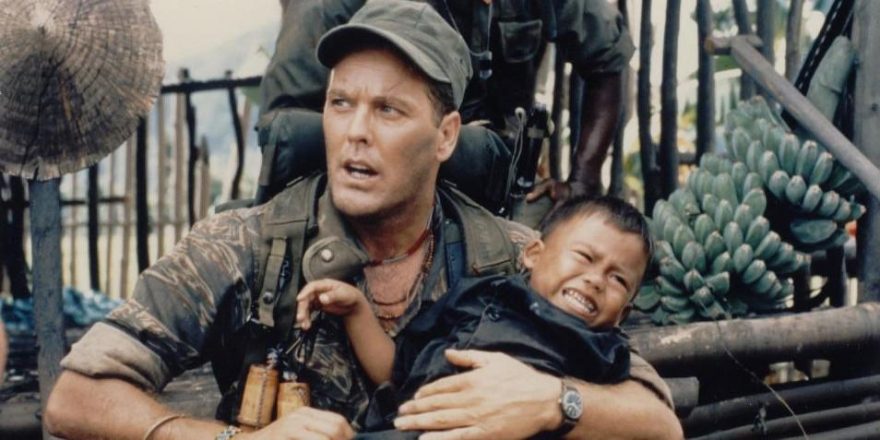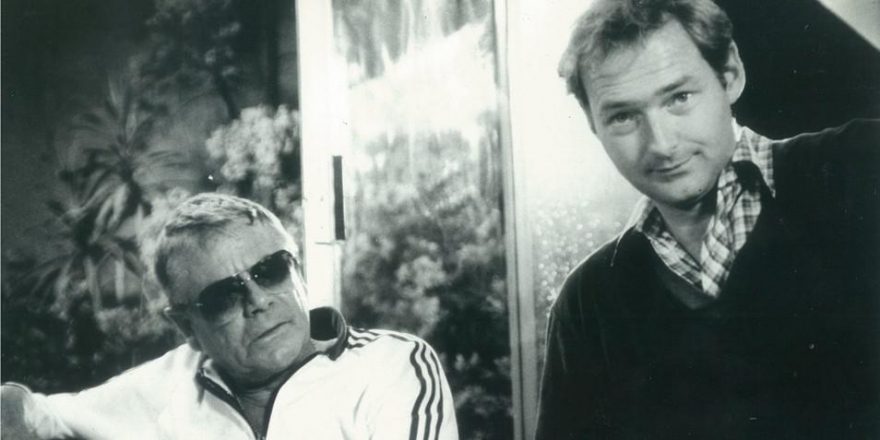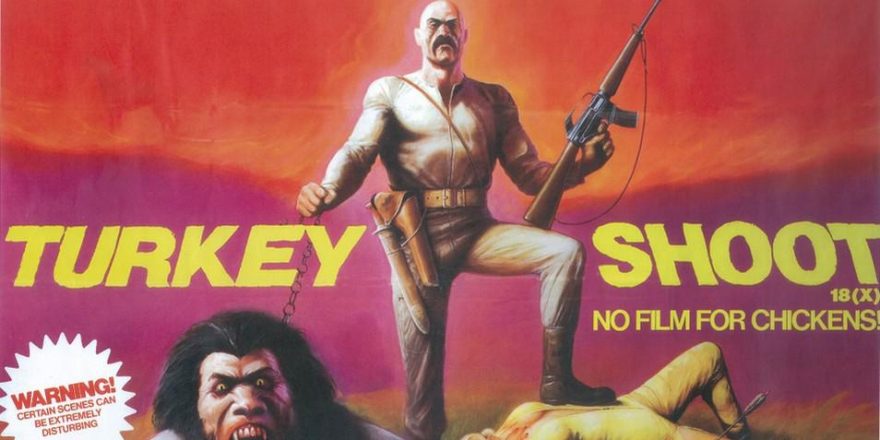1961. Home for the holidays from boarding school in England, I’d see every double feature I could get into at the village cinema. The programs would change every three days, with a pair of re-issues on Sunday. I was drawn to movies that were not shot on Hollywood backlots, particularly rugged all-location action pictures. In addition to the enhanced realism they always had, even at the B-movie level, at least one standout action set piece that really exploited the location. “Wow!”, you say when you are 15. Occasionally an otherwise forgettable movie delivered a sequence that was forever saved to my cranial hard drive. Such a movie was Ring of Fire; you can watch the movie’s extraordinary final 15 minutes here.
Sure, there was some vapid dialogue and improbable situations, but the scale and realism of the pyrotechnics generated genuine tension and awe. That was when I discovered the work of husband-and-wife filmmaking team Andrew and Virginia Stone. They avoided studio sets and shot on actual locations, both interior and exterior. This approach enhanced their black-and-white thrillers of the 1950s, such as Cry Terror, The Steel Trap and The Decks Ran Red.
Economics, no doubt, dictated their approach as much as aesthetics. Working in the co-feature/low-budget divisions of the major studios, they had to stretch every dollar to make their films stand out. Consider this suspense sequence from The Steel Trap:
The use of a large actual bank vault delivered greater production value and credibility than the usual set construction budget on a B-movie would have provided. And as an example of Andrew Stone’s visual acuity, how about that pan — 20 seconds in — that brings the mirror into view, allowing us to see what Joseph Cotten is doing after he has ducked down out of sight? Nice reveal. The modest success of Andrew and Virginia Stone’s crime thrillers, including a Doris Day vehicle, Julie (which got Stone an Oscar nomination for Best Screenplay), led to a multi-picture deal with MGM and their first film in color, The Last Voyage.
The Stones did not like miniatures, stock footage, back projection or traveling matte, all the tricks of the trade used in those days to give the appearance that the stars really were in the maw of danger. The Last Voyage was about passengers escaping a luxury liner that caught fire and sank. So they found a luxury liner about to be scrapped in Japan, the legendary SS Île de France, leased it for $4000 per day, set fire to it and sank it, at least to the point of capsizing. The ship was towed to shallow waters, where hoses from fireboats flooded forward compartments and any other area that they needed to become waterlogged. The pyro department then blew the forward funnel into the deckhouse, torched numerous nicely furnished areas, and blew stuff up a lot. Everything was shot on board. This gutsy approach is well represented in the trailer.
Together the Stones wrote the book on location shooting for postwar Hollywood.At the conclusion of shooting, the Île De France was re-floated, towed into the Yokohama shipyard and reduced to scrap. For their next film, the Stones moved from maritime disaster to forest fire with Ring of Fire, the first film of theirs that caught my attention. So imagine my delight 55 years later when I discovered the place where most of it was filmed: Vernonia, Oregon.
It’s a charming rural town of 2,000 or so, about an hour’s drive from Portland. Feeling peckish while there, I picked a burger joint at random, the Black Iron Grill. Entering the men’s room, what do I see before me? Framed memorabilia from Ring of Fire all over the walls. Vernonia was the town the Stones chose to be consumed by forest fire. In pride of place above the commode, there was this circular, preparing the locals for the big scenes to come. Maybe the only copy still in existence.
If you look closely here, you’ll find some amusement at the requests to virgin extras. “Do not laugh in scenes unless told to do so.” “If we give the signal for ‘Quiet Please,’…do not walk, talk, cough or sneeze. It will spoil the sound recording.” Crowd players were paid $10 per day, about $75 in today’s money. The Stones were experts at enlisting the co-operation of the general public and civic authorities alike.
Andrew and Virginia L. Stone, seen below at her moviola examining footage from Ring of Fire, were a true filmmaking partnership. They married in 1946 when she was a 25-year old editor, and he a low-budget director 19 years her senior, who had first made movies at the end of the silent era. He yearned to create and produce his own material. In Virginia Lively (that’s the L.) he found a kindred spirit full of energy and fresh ideas. They formed a company together; she was his editor and occasional composer, collaborated on scripts and co-produced the movies with him (a comparable partnership in its own way to Alma Reville and Alfred Hitchcock).
The Stones were ahead of their time. When studios preferred the control of back lot and sound stage shooting, they preferred natural light and actual locations. Every scene for Cry Terror, for instance, was shot on location, including the New York subway, where Stone required his star James Mason to clamber down the inside of a real elevator shaft (see image at top). Together the Stones wrote the book on location shooting for postwar Hollywood.
Cinema historian Kevin Brownlow’s obituary features a quote from Stone that offers some insight into his thinking. Stone resented the power of the lighting cameraman in the studio system.
“Cameramen have the biggest racket next to producers,” he said. “Studio heads don’t seem to worry, which seems fantastic. I insist on naturalistic lighting – not the sort where a room is uniformly lit by enormous lights in gantries. If a guy moves, the whole lot needs realigning – it takes hours, and the result is lousy. We could shoot by matchlight if we wanted to – yet cameramen are using the same number of lights they used in the days when stock was so slow.”
He rejected back projection, process work and even post-synching (dubbing). The technique paid off because whereas most studio pictures averaged eight setups a day, Stone routinely shot 20, shooting all night if he thought it would help the picture.
The climax of Ring of Fire still impresses more than half a century later. Stone holds on the spectacular fiery tableaux for longer than customary to clearly integrate the stars with the inferno beyond, like the mount shot overlooking David Janssen and Joyce Taylor as they pilot the train unaided towards the blazing mill. The sequence is an astonishing logistical achievement. The Stones pulled it off with the aid of the U.S. Army, which created fireballs with flamethrowers, and tremendous state co-operation in both Oregon and Washington. Their motivation perhaps was the movie’s strong fire safety message in both dialogue and plot. (A still-lit cigarette carelessly tossed aside is the cause of the firestorm.)
Oregon offered a derelict mill, once the largest in the world, re-stocked with new lumber, to burn down. Washington provided the doomed train and trestle bridge at Grays Harbor. Watched by a horde of spectators, press, TV and newsreel cameramen, plus five movie cameras in key positions, Army engineers detonated sections of the bridge, pitching the locomotive and carriages into the ravine below. Stone described what happened next, every director’s nightmare on an unrepeatable money shot: “Then something terrible happened. As the locomotive hit the water, a curtain of steam rose up, obscuring the view of my five cameras to what was happening to the cars…. The TV networks and newsreels had the shot – but in black and white. And we hadn’t got it.” Luckily, one of the bystanders caught the crash on 16mm color, which was subsequently blown up to 35mm and cut into the scene. The wrecked train proved too hard to pull out, so there it lies to this day (see below).
A lot of credit also goes to the good citizens of Vernonia, who embraced the heady pleasures of running panic-stricken in the streets. The comments section on Ring of Fire‘s IMDb page contains a few fond memories from those who worked on the movie as kids. More movies have been shot there since, including Twilight, but Ring of Fire was the first. Every July for years afterwards, the movie played at the small Vernonia theater for at least one weekend, sometimes the whole month.
The Stones’ significant contribution to the theory and mechanics of on-location shooting was finally recognized with a star on Hollywood Boulevard’s Walk of Fame. It is a pity Virginia Stone’s name is not included.


